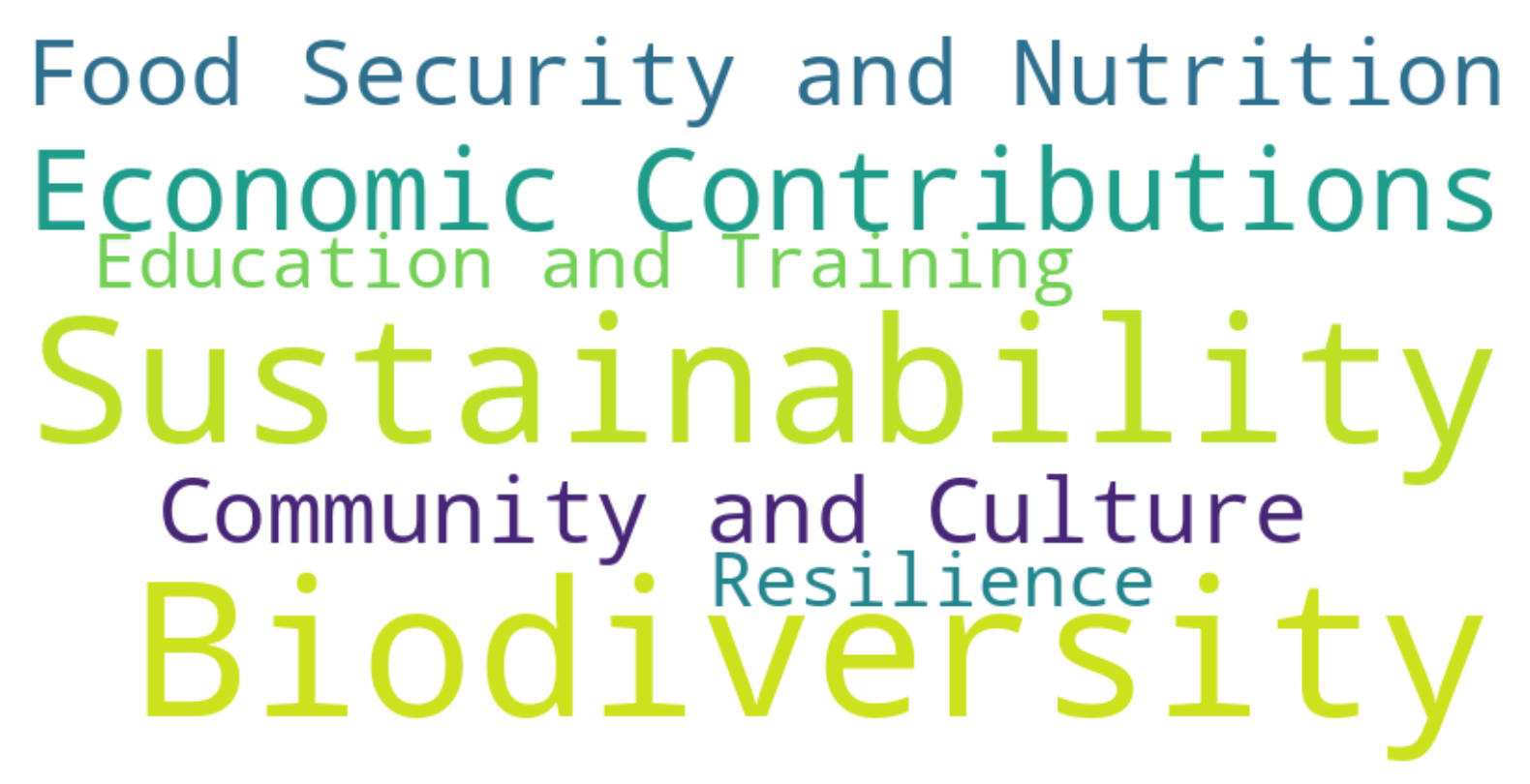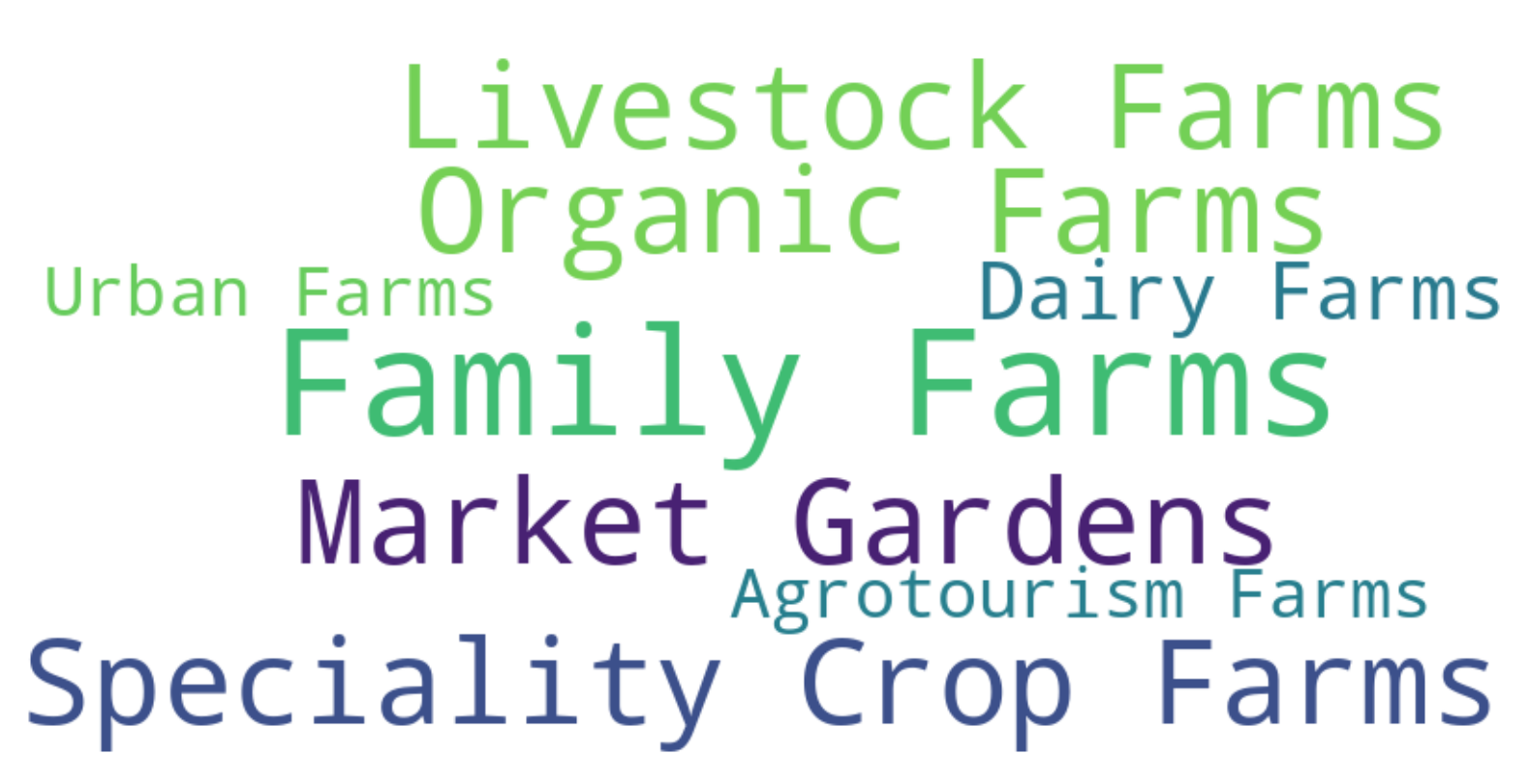The State of Small Farms 2024
Small farms, those that have gross cash farm income (GCFI) of less than $350,000 USD/year, are the backbone of our society. They keep food on our tables, our economy running, and provide stability in our communities during uncertain times. They make up about 88% of all farm operations in the US and are often passed down from generation to generation.
And yet, they are currently in a state of rapid decline while at the same time mattering more now than ever before.

Here’s why small farms are essential to a healthy community and planet:
Biodiversity
Small farms grow a variety of crops and utilize practices where outputs of one system (like livestock) are used as outputs for another (compost). The variety creates a more resilient agricultural system with more genetic diversity and a reduced risk of catastrophic crop failure from pests or disease.
Many small farms also cultivate their own heirloom and native seed varieties that are adapted to local climates and preserve genetic diversity.
Sustainability
Small farms tend to take greater care of their land than larger industrial farms. They are more likely to minimize chemical inputs, care for soil health, conserve water, and utilize organic and regenerative farming methods.
Through practices like agroforestry, permaculture, and organic farming, small farms also sequester more carbon in the soil than their factory farm counterparts.
Economic Contributions
Local economies are fueled by small farms which often buy supplies from local businesses, employ community members, and export their products, bringing more money into their communities. They also help to provide healthy food, decreasing reliance on outside food sources that may be more expensive.
While helping to stimulate the local economy, they typically operate on razor thin margins and are very susceptible to fluctuations in the market.
Food Security and Nutrition
Small farms produce fresh, local food for their communities which is less processed and less energy intensive than produce transported large distances from factory farms.
Small farms also support more resilient food supply systems. When there are many small farms, there is a diversity of food suppliers meaning if one supplier has issues it is less likely to cause issues for consumers. They are also able to maintain better quality control.
Community and Culture
Small farms help strengthen community ties by fostering a stronger sense of place and belonging. Relationship to land through food is a grounding experience that helps community members to feel a greater responsibility to care for their environment and each other.
Many small farms have been around for generations and are integral to the regional cultures and traditions that are present.
Education and Training
All of these benefits are even more valuable when considering that small farms also represent knowledge centers for community members to learn skills crucial to survival.
Small farms train young people, teaching them skills related to agriculture, sustainability, and self-reliance. This helps foster environmental stewardship and a healthy future of the community.
Resilience
Ultimately, the greatest theme that embodies small farms is resilience. Small farms are flexible, adapting to change quickly and able to respond nimbly to environmental and economic changes.
They also serve as a stable place for communities to hold on to necessary skills and traditions that support a healthy society.
Types of Small Farms

There are many different types of small farms the make up the alternative to large-scale commercial/factory farming. These farms vary in their focus, method, and products and their variations often reflect the local climate, cultural practice, market demands and personal interest of the farmers themselves. Here are some common types of small scale farms.
Family Farms

According to the USDA in 2017, 96% of US farms are family-owned, the make up 87% of total farm land and produce 82% of the value of all farm products. However, many family farms actually are quite large, when we look at just family farms that are categorized as small farms, they account for 88% of farms, just 47% of land, and only 19% of the value of all farm products produces. Across the board, all family farms are in a state of decline.
Speciality Crop Farms
Often small farm are able to carve our small niche markets that are not viable for large commercial farms. Heirloom vegetables, ornamental plants, less common tree nuts, and micro-greens are some examples.
Organic Farms
While not all small farms are organic, and increasingly larger-scale farms are taking organic market share, many continue to adhere to practices that do not rely on synthetic pesticides or fertilizers. Unfortunately, organic certification can be a cumbersome and expensive process for small-scale growers which results in larger operators having greater market access.
Market Gardens
This is what most think of when they think about small farms. These are intensive vegetable producers that often sell their products directly to consumers through CSAs (Community Supported Agriculture), farmers’ markets, and local restaurants. In fact, small farms account for 45% of all direct farm sales to consumers.
Livestock Farms
The majority of small family farms specialize in cattle (34%) or “other crops” such as hay and forage production (23%). They often focus on more sustainable, humane practices and niche markets like organic meat or free-range eggs.
Dairy Farms
Small-scale dairy produce milk and other dairy products from cow, sheep or goats. Sometimes these artisans specialize in raw mily, artisanal cheese, and other speciality products. In the US, between 1997 and 2017, 2/3rds of all small-family dairies were lost as factory farms came to dominate the industry.
Agrotourism Farms
These farms combine farming with tourism and offer visitors educational and recreational experiences. Activities may include tours, hands-on farm activities, events, and farm-to-table meals. This industry has boomed in recent years as many seek to find some connection to land and food.
Permaculture Farms
Based on the permaculture system of farm design and practices, there are no large-scale permaculture operations. These ecosystems are designed to be close to self-sufficient which means little need for external inputs but also less produce to sell as an economic output.
Urban Farms
Located within cities or towns, urban farms make use of rooftops, empty lots, balconies, or other small spaces to grow. While often not business ventures, these farms tend to provide fresh food directly to their local urban communities.
While there are many types of small farms around today, it’s important to note that there have never been fewer small farms in existence. The number of farms in the US peaked in the 1930s at over 6 million, today there are about 2 million and the average farm size has more than doubled.

Why are there so few small farms still around?
Small farms today, are not sustainable.
Nearly all farms are small farms. 84% of farms operate on less than 2 hectares world-wide. In the United States, nearly 90% of farms generate less than $250,000 per year.
However, despite their large numbers, small farms in the U.S. only make up about a quarter of all farm income. Meaning, they are far from being as economically productive as their large-scale counterparts and by not being able to compete on profitability, they are in rapid decline.
Older farmers are aging out with the average age of farmers around 57 years old and 40% of all farmland is set to change hands over the next 20 years. Given that small farms already consolidating, it is predicted that this trend will continue to accelerate if nothing is done.
While there has been a revitalized effort to support young farmers and a renewed interest from consumers in investing in sustainable and local agriculture, many young farmers face huge barriers when entering the industry. Particularly growing wealth through ownership of the land they work. Today, 55% of farmers operate on leased land often provided by absentee landowners.
A new model is needed to reverse the trend and turn small farms into profitable, sustainable businesses that can scale.
The Sunflower Collective is working to build communities on small farms in the U.S. and abroad.
Please Sign-Up here to receive updates on our progress and express interest in the project.
